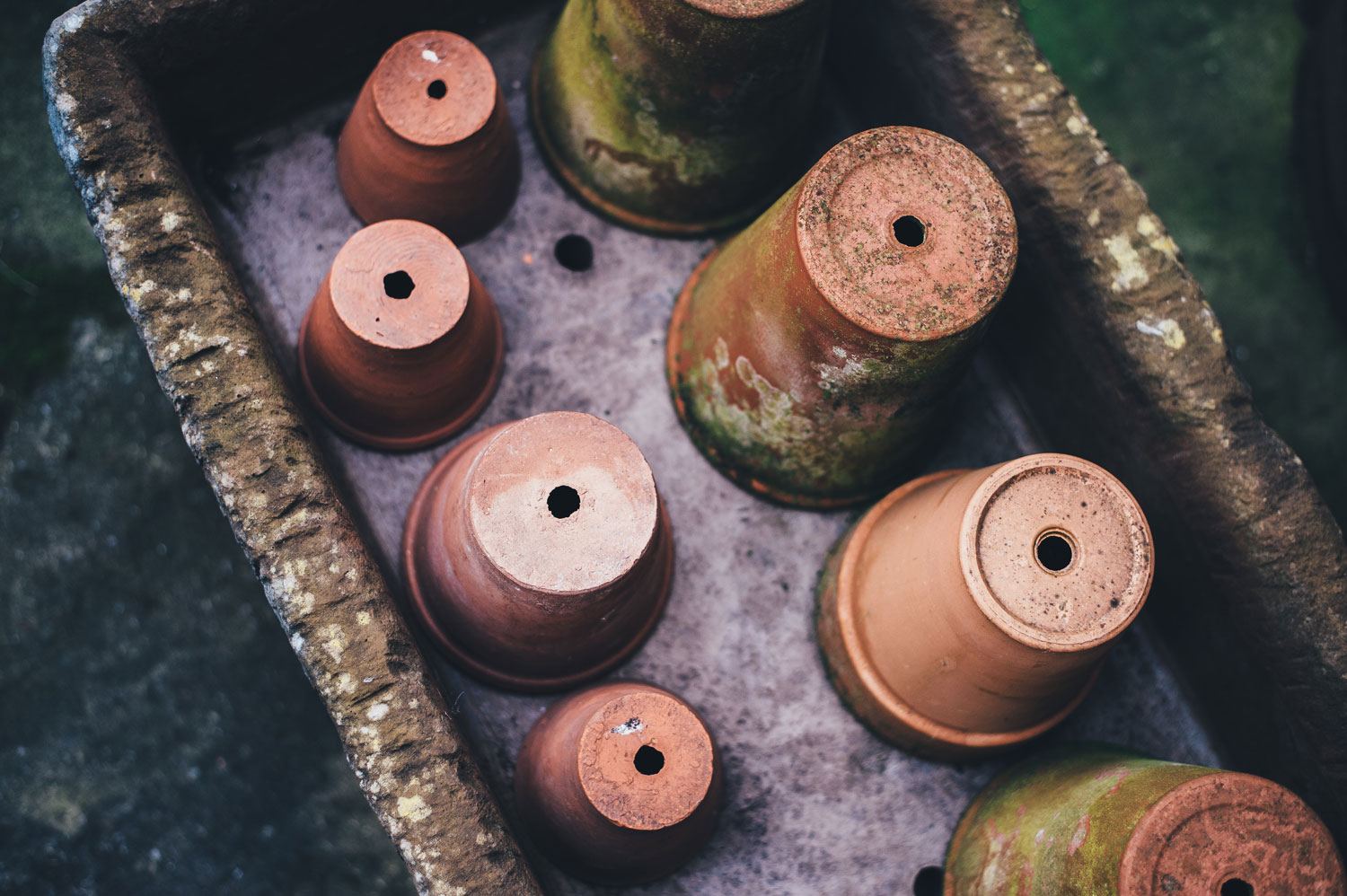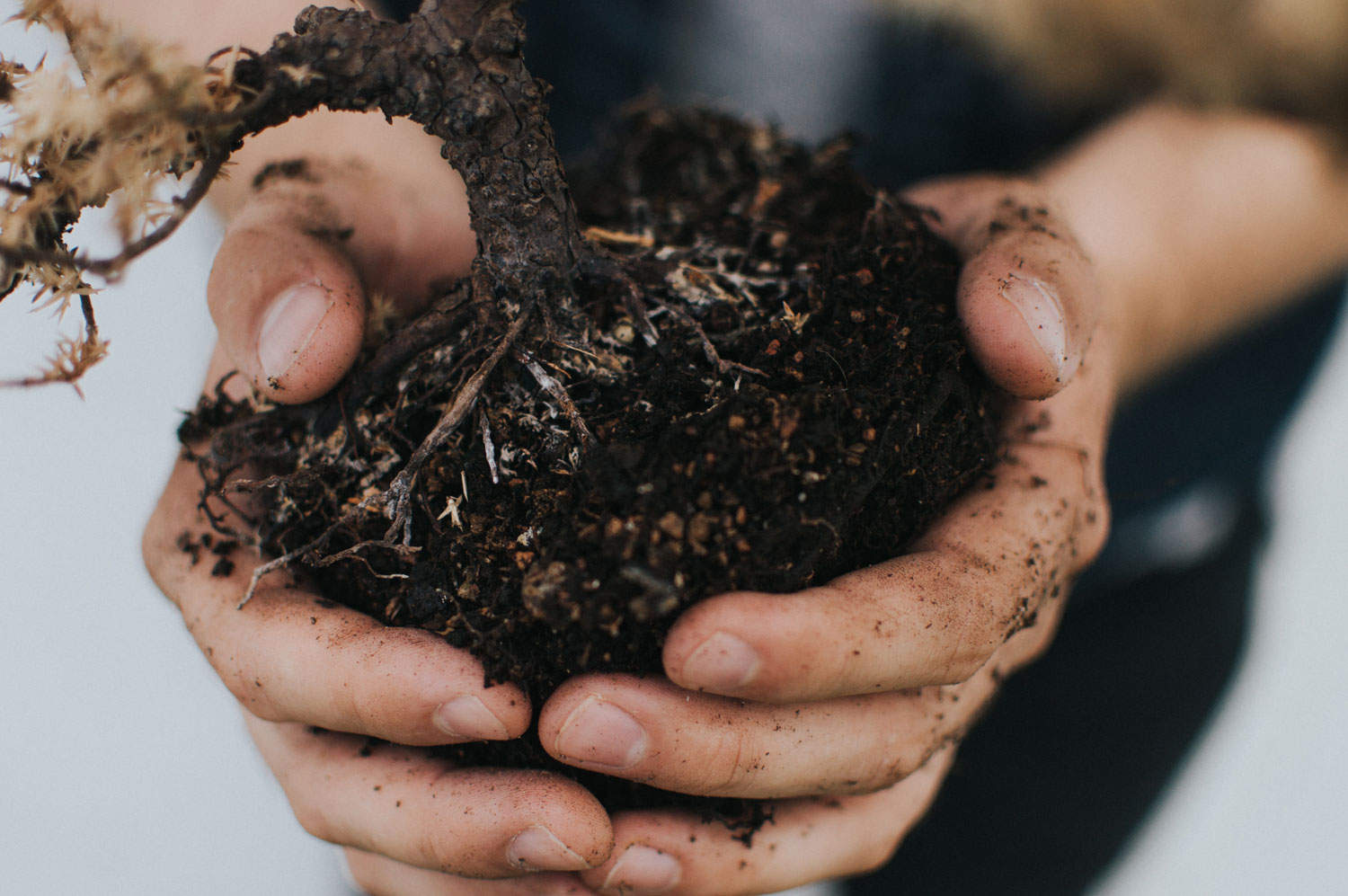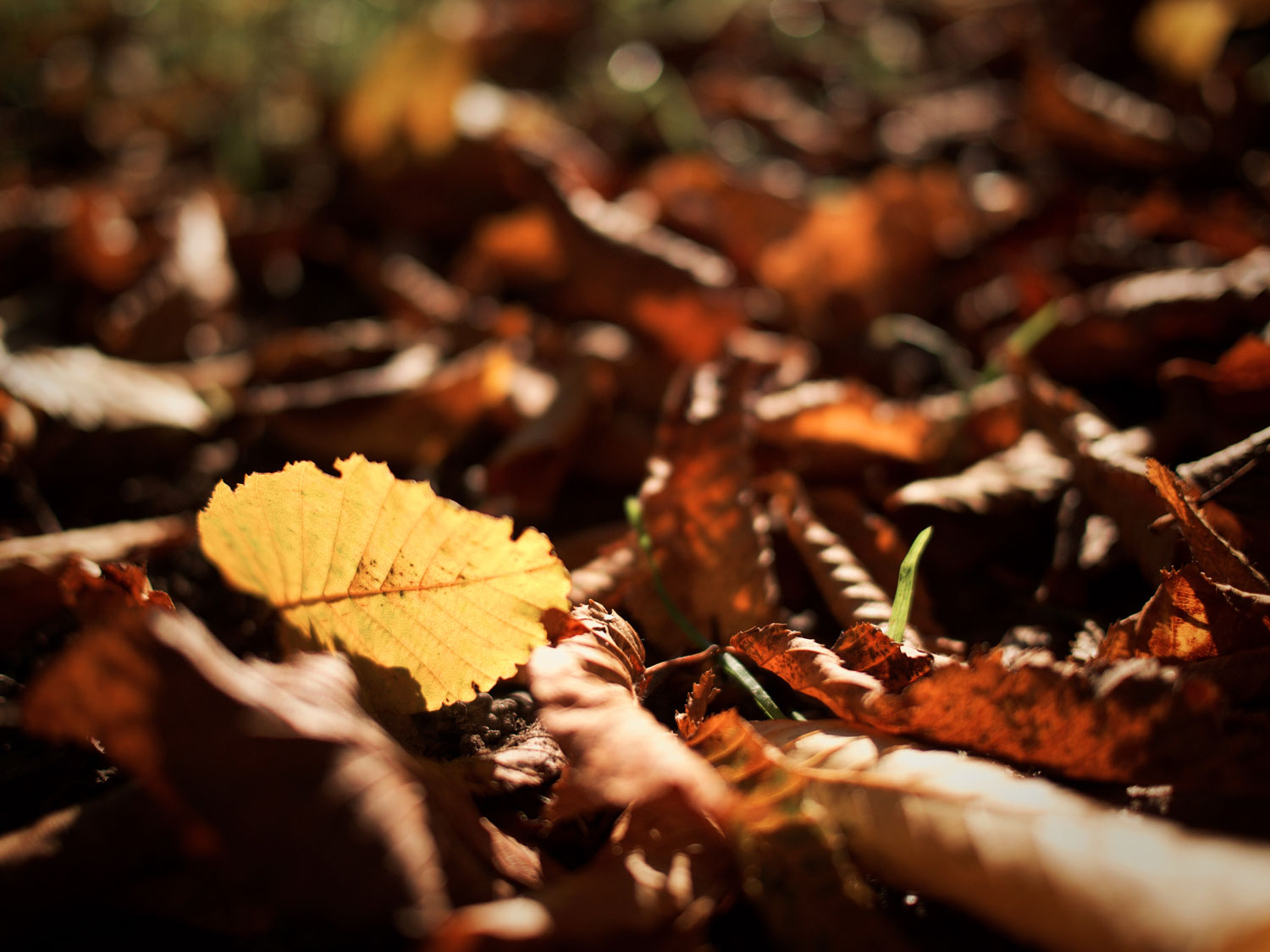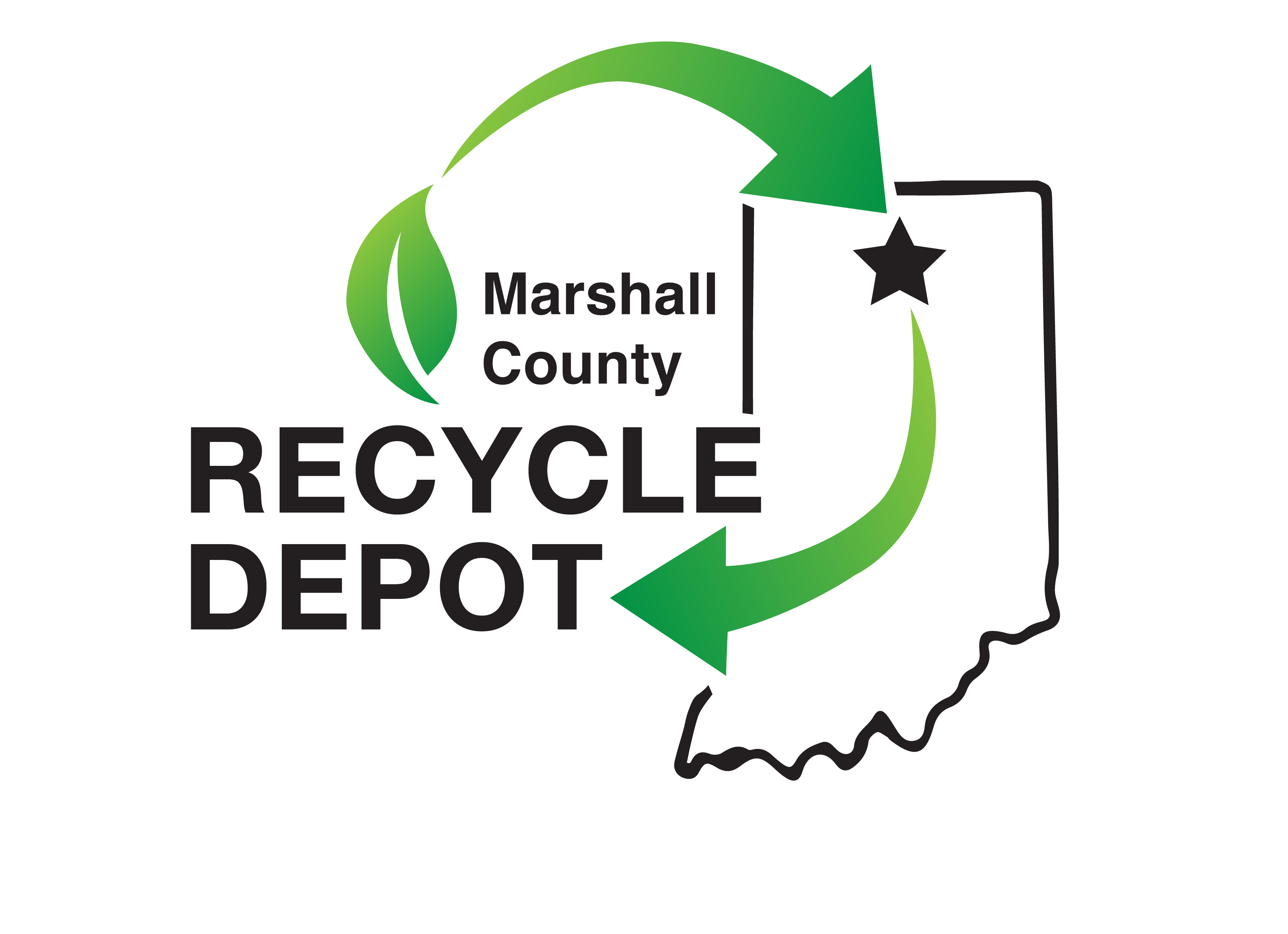Organic Waste & Composting

Currently the Recycle Depot is not taking organic waste.
We have compost bins for sale for $40, as well as a large array of resources for individuals or organizations interested in composting.
Questions about composting? Talk to one of our knowledgeable staff: call us at 574-935-8618 or stop by during normal business hours.
The Recycle Depot Pinterest page also includes a board illustrating various composting methods!
See below for some general tips on dealing with yard waste.
Yard Waste and Landfills
Yard waste is a major contributor to landfills. Recyclable yard materials such as grass clippings, tree leaves, and plant trimmings occupy 15 to 20 percent of landfill space, second only to paper.
Although this waste is biodegradable, landfills do not get the oxygen and water needed for breakdown. Landfills are constructed to prevent movement of air and moisture in order to protect the surrounding environment.
To help meet the state’s waste reduction goals, Indiana legislation mandates that most landfills can no longer accept certain types of yard waste. In addition, outdoor burning has been banned by most urban communities, eliminating another once popular method of yard waste disposal. This means that residents have to find alternate methods for disposing of yard wastes.
Using Your Grass Clippings
An excellent way to dramatically reduce yard waste is to leave grass clippings on the lawn rather than bagging them for disposal. The amount of grass clippings generated from a given lawn varies, but one estimate indicates that 5,000 square feet of lawn generates about 1 ton of clippings per year! Grass clippings left on the lawn are not harmful to the turf if it is mowed at the proper height and frequency. In fact, the clippings will return some nutrients back to the soil, reducing fertilizer requirements. Contrary to popular belief, grass clippings do not contribute to thatch buildup because they break down quite rapidly. Thatch is composed of dead, decomposing roots, and underground stems.
Maintain the lawn at a height of about 2 ½ to 3 inches, removing no more than 1/3 of the grass blade during each cutting. This will likely mean mowing more often than once a week, but mowing time is greatly reduced when clippings are not collected. Mow only when the lawn is dry to prevent clippings from matting. If the lawn is excessively tall when mowed, you should remove the clipping and either use as mulch or add to a compost pile.
Composting
form that can be absorbed by the roots of growing plants. Farmers and gardeners discovered the
wonders of using compost long ago. Now, they and many others are creating greater demand for a range of compost uses.
Other ideal waste candidates for composting are: vegetable and fruit wastes, egg shells, coffee grounds, hair, weeds, wood ash, horse and cow manure, stalks and stems, nutshells, and bark. Do not compost any materials containing animal fats, dairy products, pet manure, plastic, or synthetic materials.
Vermicomposting
Environmentally it makes good sense. It saves you money by reducing the amount of organic waste going to the landfill. It is simple, cost-effective, and natural way of recycling your garbage, and conserving a valuable resource.
Worms are an excellent manufacturer of fertilizer. Their castings are rich in phosphorous, nitrogen, and other nutrients. Worms also help moderate soil pH, as well as aerate and loosen the soil.

Worms
Red Wigglers – 2-3″ long and dark red color. They can eat more than their weight in food every day. Night crawlers (8-10″ long) live much deeper in the soil and do not have the appetite of the red wiggler. Red Wigglers can double numbers in 40 days, reach adulthood in six weeks and live about a year.
Housing
Determine how much organic waste you produce in a day to calculate the size of bin you will need. Rule of thumb – 2 square feet of surface area per person. The bin only needs to be 8-12″ deep, since these worms are surface dwellers. Drill 8-12 holes in the container for aeration (worms need oxygen to survive. The holes should be 1/4″ or less in size to prevent pests from entering. Locate the bin where it will not freeze or overheat (40-90 degrees).
Bedding
Bedding should be damp (like a wrong out sponge), not dripping wet as the worms can drown. Worms need a moist environment since they breathe through their skin. Suitable bedding materials include: peat, shredded newspapers, compost, straw, aged manure, with a mixture of sand or top soil. Fill the bin to 2/3 of its depth. After bedding is added you may add your worms and your kitchen scraps. A bedding pH of about 7 is ideal. If too high use diluted white vinegar, too low add baking soda.
Feeding
Worms can eat most organic waste, though they do have some favorite foods. Their food must be soft in order for them to eat it. Worms have mouths but expel their stomach and enzymes onto the food surface. Feed the worms about a quart (one pound) of scraps per square foot of surface area per week. 2 pounds of worms can process about 7 pounds of scraps a week. Eggshells are essential to keep the bedding from becoming too acidic for the worms.
Harvesting
Easy Method
- Move all existing contents to one half of the bin, and put newly prepared bedding in the other half.
- Place food scraps only in new bedding. Worms will migrate to new bedding within 2-4 weeks.
- Remove finish compost and even out new contents.
Fast Method
- Pour out contents of bin on black plastic bag, in sunlight or
other bright light. - Divide contents into cone shaped piles about 6″ across the base.
- Worms will avoid light and migrate down in pile (10-15 minutes)
- Remove compost
- Make new bedding and return worms to bin.
Do’s & Don’t
Garden waste is generally not suitable for these worms waste is best dealt with by conventional composting methods. Materials such as grass clippings may be given in small quantities, but if too much is fed it may heat up quickly and give off ammonia, which will harm the worms.

DO COMPOST
- Fruit & Vegetable Trimmings
- Coffee Grounds & Filters
- Tea Bags/Leaves
- Crushed Eggshells
- Used Paper Towels
- Soft Green Plant Trimmings
- Shredded Paper
- Bread & Grains
- Hair
DON’T COMPOST
- Meat, Bones & Fish
- Dairy Products
- Cooked, Greasy & Oily Foods
- Beans
- Dog, Cat & Bird Feces
- Sawdust From Plywood & Treated Lumber
- Woody Prunings
- Salts/Vinegars/Oils
- Hot Peppers
